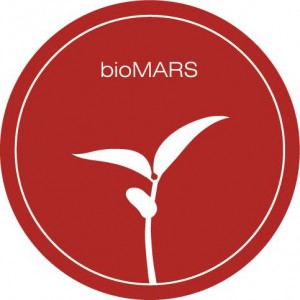 Interview with the bioMars Team
Interview with the bioMars Team
Tell us about the Epic Challenge Program.
Epic Challenge is a learning program that was first developed by National Aeronautics and Space Administration, better known as NASA. The main idea of the program is to help students to develop their scientific understanding and skills by coming up with creative solutions to real-world problems. This is achieved by using the Innovative Conceptual Engineering Design (ICED) methodology developed by Dr. Charles Camarda, NASA astronaut, Senior Advisor of Innovation and the man behind Epic Challenge. This year’s Epic Challenge is all about sustaining human life on Mars. Our sister group is developing a computer program that can be used to simulate events happening in the hypothetical Mars colony. Our goal is to come up with a way to grow edible plants in a foreign planet. Both projects are fascinating and equally important parts in the process of getting astronauts to Mars.
Here in Joensuu we have Karelia University of Applied Sciences, University of Eastern Finland, Arcusys (http://www.arcusys.fi/etusivu), Normaalikoulu High School, PKKY, who were developing this program for Finland in co-operation with NASA. This is the first time Epic Challenge is being held with multi-cultural teams and in Europe. We have two teams, bioMARS is focusing on developing a self-sustainable food-growing unit for Mars, and Team Red Sandbox is developing a problem-solving program for the astronauts on Mars.
Our bioMARS-blog: http://growingfoodonmars.blogspot.fi
Team Red Sandbox –blog: http://teamredsandbox.tumblr.com
Who are your financing-subjects?
Currently we’re gathering sponsors, in our upcoming Marsraiser-event (29.2.2016). Companies and entrepreneurs can support us financially in our testing and prototyping phases, and to make our trip to Kennedy Space Center happen this Spring.
What are researches you’re working at?
We bioMARS have the insect-growing working on progress (and studying how insects would work with plants in a planthouse), and we’re also studying lighting resources on Mars, and how would we illuminate the planthouse efficiently.
Why do you suppose that edible insects could be an important proteins source for the future astronauts?
Eating insects is normal already for many people across the world, and they have very good nutritional value, are fast to grow. In addition, we could feed the insects with plant parts, which are inedible to humans. Insects could be prepared to be served as a paste, or in some other visually nice way, so they don’t appear to be what we think are “nasty” bugs.
Are you studying methods to make the astronauts breed themselves the insects they need for proteins or are you planning to give them some “special foods” (like bars or snacks) made here on Earth?
In our current research insects would grow and reproduce without too much human interaction, and the insects would be beneficial to the plant-growing parts of the food-production. The actual food-growing unit (which would possibly include plants and insects) would take place on Mars as a whole, so the food production would be “local”.
Can the instinctive disgust coming from the idea of eating an insect be a problem for the astronauts?
That problem is of course possible, but it could be overcome with representing the food as a paste, making it look like meat, flour, or appetizing in other ways. It’s just a matter of cultural knowledge and adjusting to the situation.
Do they eventually need a sort of special training to “learn” to eat edible insects?
Even now astronauts diets are regulated by their own preferences and they get to eat what they want (to a certain extent), so insects could be tested by NASA beforehand on Earth, and if some astronauts grow to prefer those, it would be nice to see insects as a permanent adjustment to astronauts diets on ISS and in our case, on Mars.
What are the other proteins sources you’re testing?
As there is a lot of confirmed research on this matter, we’re just reading about other resources, and currently testing only insects. All in all, producing meat such as cattle or poultry is not an efficient way of producing protein in Martian environment or aboard spaceships. This is why we are concentrating mainly on insects and possibly mushrooms.
There’s a company –EntoCube– that has engineered an all-in modular breeding system for edible insects. Could something like that find a place in a spaceship (with the right dimensions, obviously) in the future?
We are actually in co-operation with EntoCube. About spaceships we can’t know for now, as we’re just focusing on Mars as a case study.





